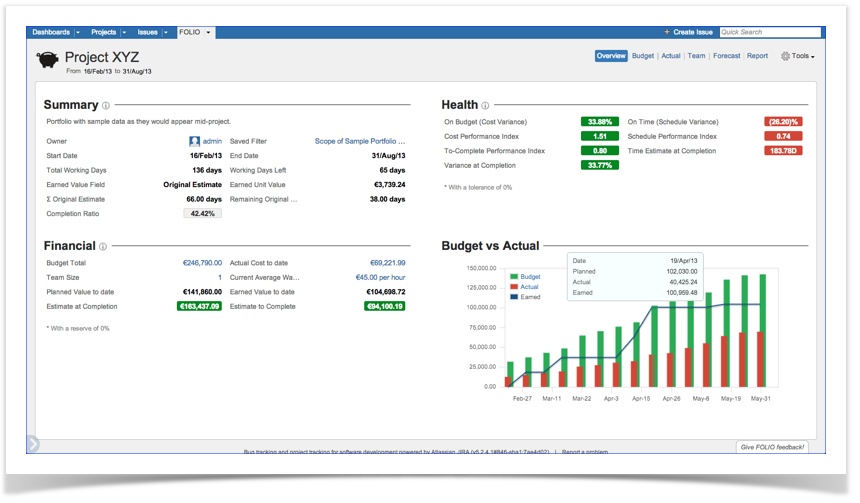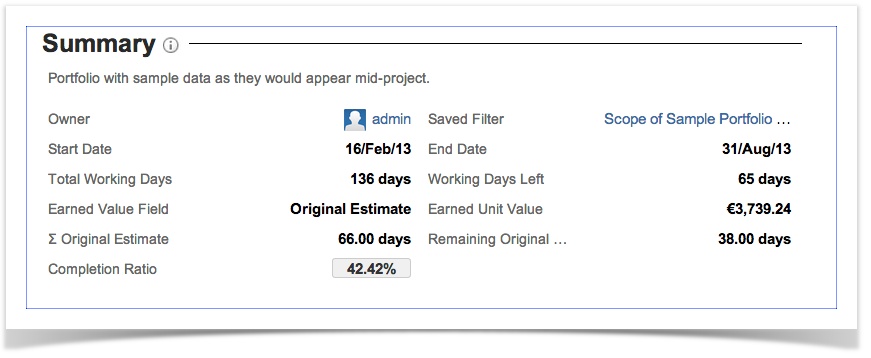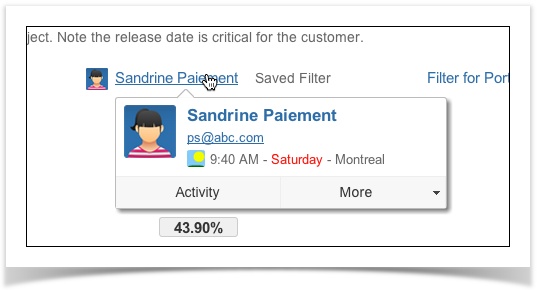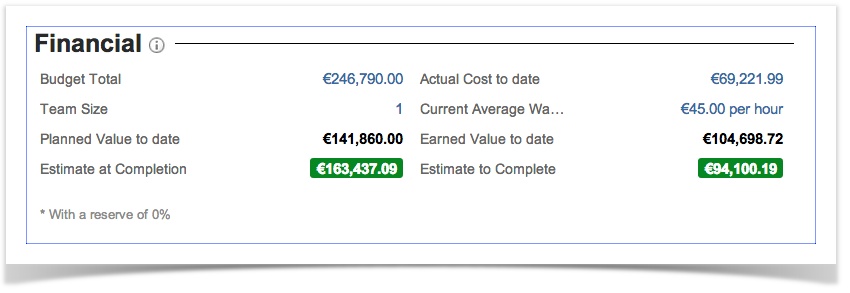This is the documentation for an older version of Folio and has been moved to the Tempo instance.
Please view the Folio Category in the Tempo Products Wiki Categories for all versions of Folio's Documentation.
Portfolio Overview
The overview page allows you to see the current status of your portfolio at a glance.
SummaryThe following table describes the various fields of the summary section.
FinancialThe following table describes the various fields of the financial section.
HealthThe following table describes the various fields of the health section.
Budget vs ActualThe Budget vs Actual bar chart show the portfolio weekly statuses up to date. When Clicking on bars or line you get the Planned, Actual and Earned values as they were at the end of the selected week. Note that clicking on Budget or Actual on the chart legend will bring you to the Portfolio Budget or Portfolio Actual page
Definitions
| ||||||||||||||||||||||||||||||||||||||||||||||||||||||||||||||||||||||||||||||||||||||||||||||||||||||||||||||||





